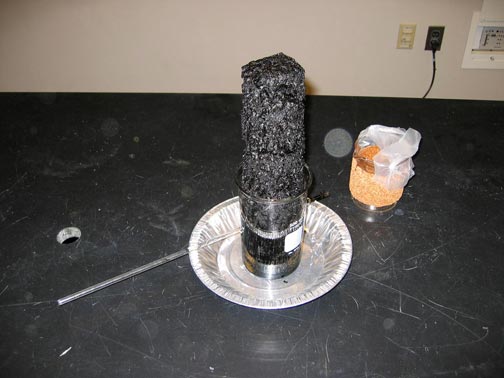What's left when you take the water out of the sugar?
 Table sugar is mixed with concentrated sulfuric acid and dehydrated, revealing that sugar is nothing more than carbon and water.
Table sugar is mixed with concentrated sulfuric acid and dehydrated, revealing that sugar is nothing more than carbon and water.
Ingredients: sucrose, sulfuric acid, beaker, glass stirring rod
Procedure: A complete recipe follows.
1. Place white crystalline sucrose in a beaker.
2. Add concentrated sulfuric acid, stir to mix with sugar, and observe.
Understanding: This is a wonderfully vile reaction where the heavenly sweet and pure white powder of table sugar is converted into a noxious and smouldering ``Devil's Tower'' of black carbon
C12H22O11(s) + 11 H2SO4(l) → C12(s) + 11 H2SO4 · H2O(l)
At the level of atoms and molecules, the carbon is being reduced to its elemental form. The reduction is exothermic producing a good bit of heat.The dehydration reaction is an absolutely essential one to life on Earth. Metabolic processes build-up large molecules from smaller molecular building blocks. That is anabolic metabolism. Examples include the synthesis of proteins from amino acids, polysaccharides from simple sugars, and DNA from nucleotides. In each of those cases, the chemical reaction that joins the smaller molecular building blocks in the formation of a biopolymer is a dehydration reaction!
The cyclic nature of metabolic processes dictates that while we build-up macromolecules, we must also break-down molecules into their building blocks. That is catabolic metabolism. Once again, our metabolism exploits the dehydration reaction, but this time in reverse. The digestion of a peptide into amino acids can proceed by hydration reactions that insert a water molecule and cleave the peptide bond.
Dehydration of sugar in water
Question: Suppose that the reaction is repeated, with a slight variation: The table sugar is dissolved in water first before the sulfuric acid is added. Predict how that reaction will proceed.You can check your answers here.